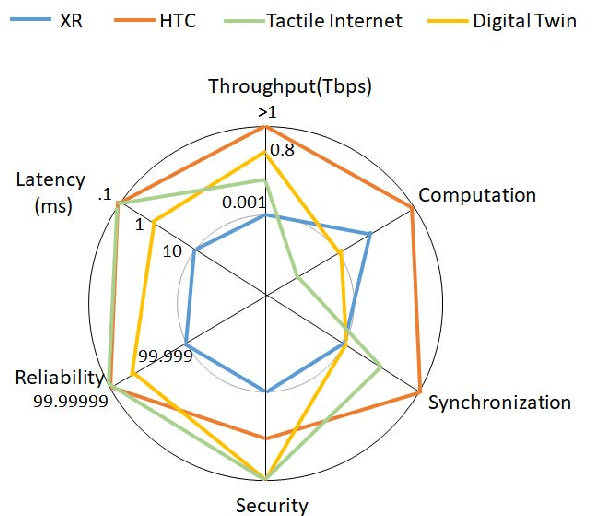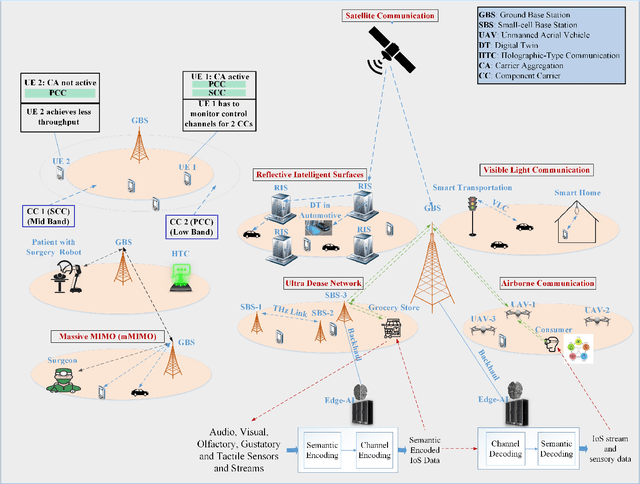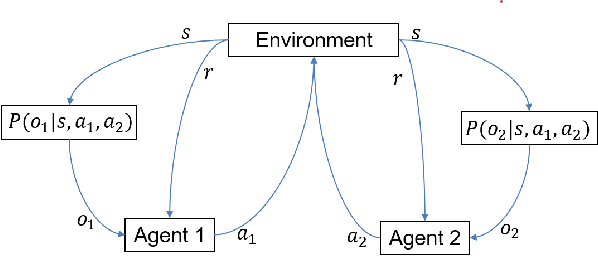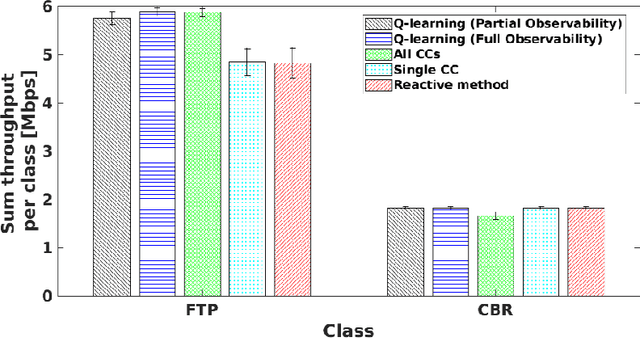Roghayeh Joda
Business Model Canvas for Micro Operators in 5G Coopetitive Ecosystem
Sep 28, 2023Abstract:In order to address the need for more capacity and coverage in the 5th generation (5G) of wireless networks, ultra-dense wireless networks are introduced which mainly consist of indoor small cells. This new architecture has paved the way for the advent of a new concept called Micro Operator. A micro operator is an entity that provides connections and local 5G services to the customers and relies on local frequency resources. We discuss business models of micro operators in a 5G coopetitive environment and develop a framework to indicate the business model canvas (BMC) of this new concept. Providing BMC for new businesses is a strategic approach to offer value to customers. In this research study, BMC and its elements are introduced and explained for 5G micro operators.
The Internet of Senses: Building on Semantic Communications and Edge Intelligence
Dec 21, 2022



Abstract:The Internet of Senses (IoS) holds the promise of flawless telepresence-style communication for all human `receptors' and therefore blurs the difference of virtual and real environments. We commence by highlighting the compelling use cases empowered by the IoS and also the key network requirements. We then elaborate on how the emerging semantic communications and Artificial Intelligence (AI)/Machine Learning (ML) paradigms along with 6G technologies may satisfy the requirements of IoS use cases. On one hand, semantic communications can be applied for extracting meaningful and significant information and hence efficiently exploit the resources and for harnessing a priori information at the receiver to satisfy IoS requirements. On the other hand, AI/ML facilitates frugal network resource management by making use of the enormous amount of data generated in IoS edge nodes and devices, as well as by optimizing the IoS performance via intelligent agents. However, the intelligent agents deployed at the edge are not completely aware of each others' decisions and the environments of each other, hence they operate in a partially rather than fully observable environment. Therefore, we present a case study of Partially Observable Markov Decision Processes (POMDP) for improving the User Equipment (UE) throughput and energy consumption, as they are imperative for IoS use cases, using Reinforcement Learning for astutely activating and deactivating the component carriers in carrier aggregation. Finally, we outline the challenges and open issues of IoS implementations and employing semantic communications, edge intelligence as well as learning under partial observability in the IoS context.
Optimal Power Allocation in Downlink NOMA
Jul 14, 2021



Abstract:Power-domain non-orthogonal multiple access (NOMA) has arisen as a promising multiple access technique for the next-generation wireless networks. In this work, we address the problem of finding globally optimal power allocation strategies for the downlink of a generic single-cell NOMA system including multiple NOMA clusters each operating in an isolated resource block. Each cluster includes a set of users in which the well-known superposition coding (SC) combined with successive interference cancellation (SIC) technique (called SC-SIC) is applied among them. Interestingly, we prove that in both the sum-rate and energy efficiency maximization problems, network-NOMA can be equivalently transformed to a virtual network-OMA system, where the effective channel gain of these virtual OMA users are obtained in closed-form. Then, the latter problems are solved by using very fast water-filling and Dinkelbach algorithms, respectively. The equivalent transformation of NOMA to the virtual OMA system brings new insights, which are discussed throughout the paper. Extensive numerical results are provided to show the performance gap between fully SC-SIC, NOMA, and OMA in terms of system outage probability, BS's power consumption, users sum-rate, and system energy efficiency.
Age of Information Aware VNF Scheduling in Industrial IoT Using Deep Reinforcement Learning
May 10, 2021



Abstract:In delay-sensitive industrial internet of things (IIoT) applications, the age of information (AoI) is employed to characterize the freshness of information. Meanwhile, the emerging network function virtualization provides flexibility and agility for service providers to deliver a given network service using a sequence of virtual network functions (VNFs). However, suitable VNF placement and scheduling in these schemes is NP-hard and finding a globally optimal solution by traditional approaches is complex. Recently, deep reinforcement learning (DRL) has appeared as a viable way to solve such problems. In this paper, we first utilize single agent low-complex compound action actor-critic RL to cover both discrete and continuous actions and jointly minimize VNF cost and AoI in terms of network resources under end-to end Quality of Service constraints. To surmount the single-agent capacity limitation for learning, we then extend our solution to a multi-agent DRL scheme in which agents collaborate with each other. Simulation results demonstrate that single-agent schemes significantly outperform the greedy algorithm in terms of average network cost and AoI. Moreover, multi-agent solution decreases the average cost by dividing the tasks between the agents. However, it needs more iterations to be learned due to the requirement on the agents collaboration.
 Add to Chrome
Add to Chrome Add to Firefox
Add to Firefox Add to Edge
Add to Edge